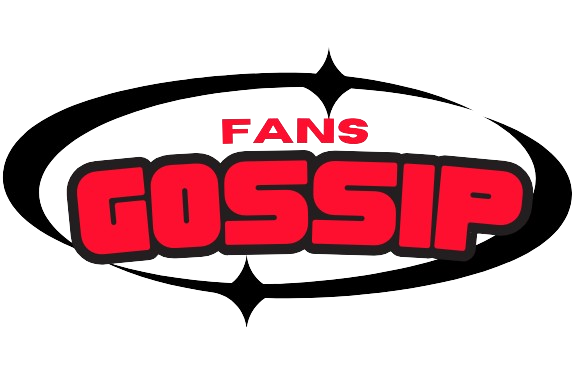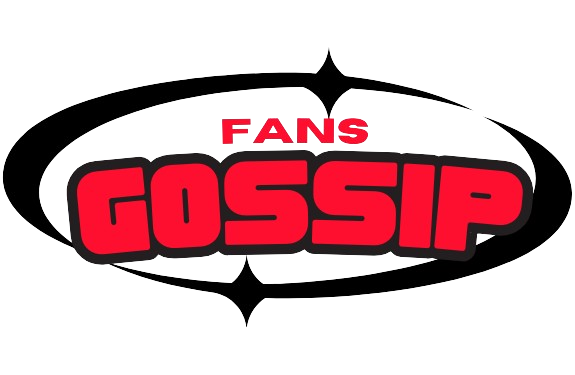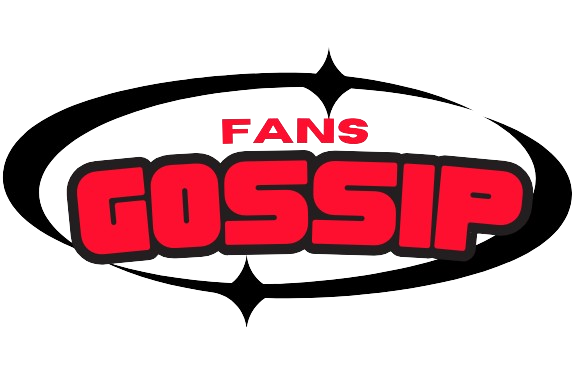Enzo Ferrari
“Italy’s Enzo Ferrari, once a triumphant race car driver, pivoted his life towards crafting formidable sports cars and leading a championship-winning racing outfit.”
1898-1988
“Revving Up the Silver Screen: Legendary Automaker Enzo Ferrari Takes Center Stage in New Biopic”
“A tumultuous chapter in Enzo Ferrari’s life takes center stage in the new film ‘Ferrari,’ directed by Michael Mann and featuring Adam Driver in the lead role. Set against the backdrop of 1957, the biopic premiered at the 2023 Venice International Film Festival before hitting theaters. The storyline revolves around Ferrari’s struggles following the loss of his son, Dino, and the high-stakes Mille Miglia road race. Despite the adrenaline-pumping racing sequences, Driver emphasizes the script’s focus on character depth, shedding light on Ferrari’s intricate personal and professional relationships. Reflecting on the film’s themes, Driver highlights the exploration of loss and grief in an era before widespread psychological understanding, where individuals crafted their own coping mechanisms. He describes Ferrari as a character with layers of complexity, acknowledging the challenge of portraying someone who isn’t always likable but is rich with unresolved contradictions.”
Contents:
- Who Was Enzo Ferrari?
- Quick Facts
- Early Years
- Driving Career and Team Manager
- Rise of Ferrari
- Personal and Company Turmoil
- Later Years, Death, and Legacy
- Enzo Ferrari Car
- Movies About Ferrari
- Quotes
“Unraveling the Enigma: Exploring the Legacy of Enzo Ferrari”
Enzo Ferrari initiated his racing career in 1919, eventually affiliating with Alfa Romeo and assuming leadership of its racing division after retiring from driving in 1931. Post-World War II, the Ferrari brand gained prominence, securing numerous major championships while expanding into touring car manufacturing. Despite professional success, Ferrari endured personal anguish following the untimely passing of his son, compounded by financial struggles prompting merger exploration with other automakers. Ferrari relinquished his presidential role in 1977 and passed away in 1988 at age 90. Today, the Ferrari brand remains a global icon, with over 13,000 cars sold in 2022, solidifying its status as one of the foremost luxury car manufacturers worldwide.
Quick Facts
FULL NAME: Enzo Anselmo Ferrari
BORN: February 18, 1898
DIED: August 14, 1988
BIRTHPLACE: Modena, Italy
SPOUSE: Laura Dominica Garello Ferrari (1923-1978)
CHILDREN: Alfredo “Dino” and Piero
ASTROLOGICAL SIGN: Aquarius
Early Years
Enzo Anselmo Ferrari entered the world on February 18, 1898, in Modena, Italy, as the second child of Adalgisa and Alfredo Ferrari, a skilled metal worker. His fascination with racing ignited at the tender age of 10 when his father took him to witness a thrilling motor car race in Bologna.
Despite nurturing aspirations of becoming an opera singer, Ferrari’s life took a poignant turn following the devastating loss of his father and brother to the flu pandemic of 1916. Bereft of familial support, he relinquished his dreams and assumed adult responsibilities, leaving school to serve as an instructor at Modena’s fire service workshop.
In 1917, Ferrari enlisted in the Italian Army, where he found himself shoeing mules for the 3rd Alpine Artillery Division. Amidst the rigors of military life, he confronted his own battle with the flu, emerging with an honorable discharge from service. These formative experiences would shape Ferrari’s resilience and fortitude, laying the groundwork for his legendary journey in the world of motorsport.
Driving Career and Team Manager
In 1919, Ferrari moved to Milan to work as a test driver for Costruzioni Meccaniche Nazionali. Given the chance to compete with the company’s racing team, he made his debut at that year’s Parma-Poggio di Berceto hillclimb race, finishing fourth in his division. He left CMN the following year to join Alfa Romeo. In 1919, Ferrari relocated to Milan, where he assumed the role of a test driver at Costruzioni Meccaniche Nazionali. Presented with the opportunity to race for the company’s esteemed racing team, he marked his debut at the Parma-Poggio di Berceto hillclimb race later that year, securing a commendable fourth-place finish in his division. The following year, Ferrari parted ways with CMN and embarked on a new chapter by joining forces with Alfa Romeo.
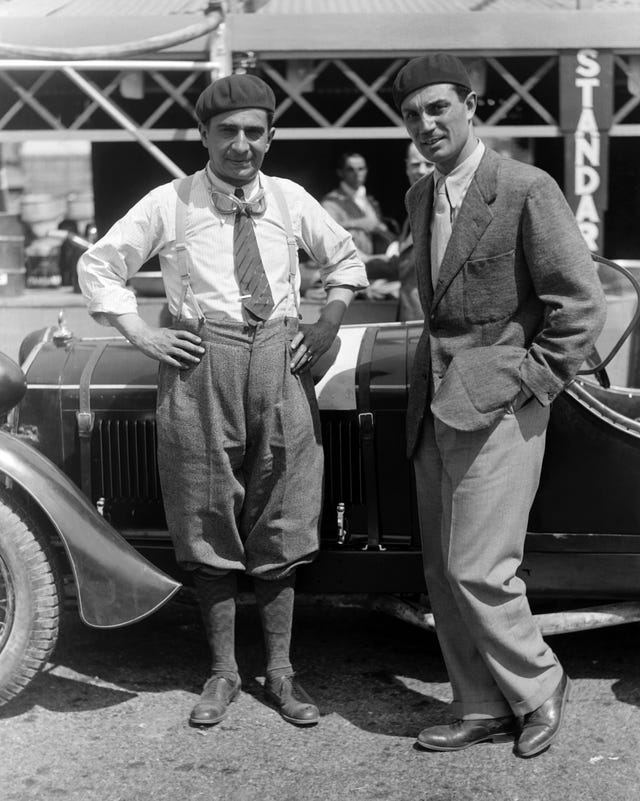
His burgeoning career gained momentum with a notable victory at the Circuito del Savio in 1923. It was during this period that Ferrari crossed paths with the parents of World War I flying ace Francesco Baracca. Moved by their suggestion, Ferrari adopted the emblem—a prancing horse—that once adorned Baracca’s plane as a symbol of good fortune. This iconic emblem would later become synonymous with the power and prestige of the Ferrari brand. Additionally, in 1923, Ferrari exchanged vows with Laura Dominica Garello, marking a significant milestone in his personal life amidst his burgeoning success in the world of motorsport.
Following his triumphant victory at the Circuito del Savio in 1923, Enzo Ferrari encountered the parents of World War I flying ace Francesco Baracca. Impressed by Ferrari’s accomplishments, they recommended that he adopt the emblem—a prancing horse—that had adorned their son’s plane as a symbol of good fortune. This iconic emblem would later become synonymous with the power and prestige of the Ferrari marque, embodying the spirit of speed and elegance.
Moreover, in that same transformative year, Ferrari entered into matrimony with Laura Dominica Garello, marking a joyous union amidst his burgeoning success in the world of motorsport. These significant milestones underscored Ferrari’s meteoric rise as a racing legend and laid the foundation for the enduring legacy of the Ferrari brand.
Italian Racer Nando Minoia and Team Leader Enzo Ferrari at the Circuit of France’s 24 Hours of Le Mans in June 1932
Renowned for his cautious approach to engine preservation, Enzo Ferrari nevertheless claimed victories in numerous races, earning accolades from his homeland for his sporting achievements. In 1929, he took a pivotal step by assembling his own team of drivers and engineers, establishing the Scuderia Ferrari, colloquially known as the Ferrari Stable. Primarily composed of Alfa Romeos, this racing outfit swiftly evolved into the official racing arm of the automaker.
Ferrari’s personal milestones continued to intersect with his professional endeavors. In August 1931, he participated in his final race, shortly before welcoming his cherished son, Dino, into the world in January 1932. Despite notable triumphs, such as a monumental victory at the 1935 German Grand Prix, Ferrari faced setbacks, leading to the closure of his scuderia in 1937 when Alfa Romeo reclaimed its racing division.
In September 1939, Ferrari parted ways with the company for good, albeit with a restrictive caveat: he was prohibited from utilizing the Ferrari name in conjunction with racing or automotive ventures for a minimum of four years. This pivotal juncture marked the beginning of a new chapter in Ferrari’s storied career, setting the stage for his subsequent endeavors in reshaping the landscape of motorsport.
The Ascendancy of Ferrari: A Legacy Carved in Speed and Passion
Following his departure from Alfa Romeo, Enzo Ferrari established Auto Avio Costruzioni in Modena with aspirations of crafting his own racing cars. However, the eruption of World War II prompted government intervention, compelling the company to relocate its operations to nearby Maranello, where it shifted focus to manufacturing grinding machines.
With the conclusion of the war, Ferrari resumed his pursuit of designing racing cars. In March 1947, he unveiled the inaugural Ferrari, the 125 S, and embarked on its maiden test-drive. The marque swiftly secured its maiden victory later that year at the Rome Grand Prix, signaling the beginning of an illustrious racing legacy. Subsequent triumphs at prestigious events such as the Mille Miglia in 1948, the 24 Hours of Le Mans in 1949, and the British Grand Prix in 1951 solidified Ferrari’s reputation as a dominant force in motorsport.
The years 1952 and 1953 witnessed Ferrari driver Alberto Ascari clinch consecutive world racing championships, further bolstering the brand’s standing on the global stage. Concurrently, the company ventured into the production of road cars, captivating the attention of the affluent and influential elite, who eagerly sought to acquire these coveted automobiles. This period marked the emergence of Ferrari as not only a dominant force in racing but also a purveyor of luxury vehicles that embodied style, performance, and prestige.
Personal and Corporate Struggles: Navigating Turmoil with Resilience and Resolve
Despite ascending to the zenith of the racing industry in the 1950s, Enzo Ferrari grappled with profound personal turmoil during this epoch. The most devastating blow came with the loss of his son Dino to muscular dystrophy in 1956, an agonizing tragedy that plunged him into a state of seclusion and introspection. Additionally, Ferrari endured the heart-wrenching loss of six drivers between 1955 and 1965, their untimely deaths casting a somber shadow over his illustrious career.
The year 1957 proved particularly tumultuous for Ferrari, as he faced trial for and was ultimately acquitted of manslaughter following a tragic incident at the Mille Miglia, where one of his cars veered into a roadside crowd, claiming the lives of nine spectators. Amidst mounting challenges, Ferrari encountered further upheaval in 1961 with the infamous “Palace Revolt,” which saw the departure of several top engineers and executives following disputes reportedly stemming from familial matters.
In a pivotal turn of events, Ferrari explored the prospect of merging operations with the Ford Motor Company in 1963. However, concerns over potential loss of control prompted him to withdraw from negotiations at the eleventh hour. Despite his steadfast resolve to maintain autonomy, Ferrari eventually relinquished a portion of company control in 1969, selling a 50-percent stake to Fiat due to pressing financial constraints. These trials and tribulations underscored the tumultuous journey of a racing icon grappling with personal tragedy, professional challenges, and the relentless pursuit of excellence.
Turbulence in Personal and Corporate Realms: Triumphing Through Adversity with Tenacity and Determination
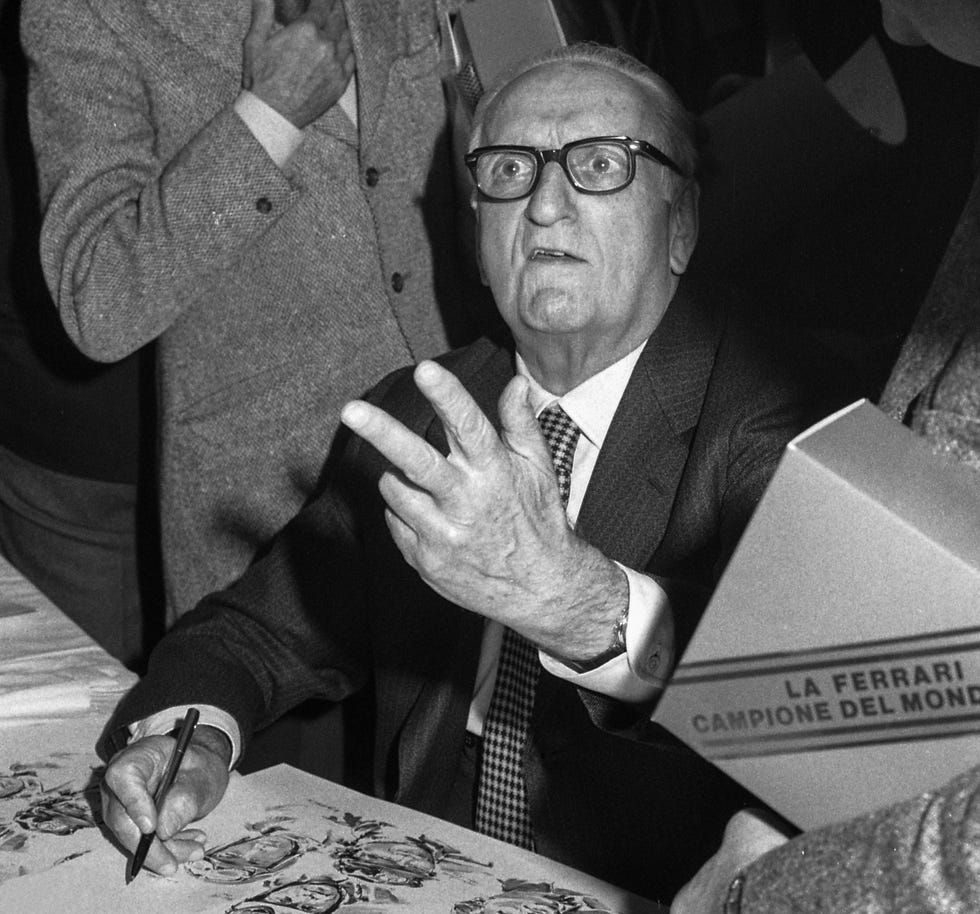
Enzo Ferrari appears at a news conference in 1977, the same year he relinquished the presidency of his namesake car company.
Ferrari formally stepped down as president of his eponymous company in 1977, yet he retained significant influence over its operations. The subsequent year brought another wave of personal upheaval with the passing of his wife, followed by the revelation of his secret son, Piero, born in 1945 to his mistress, Lina Lardi.
Amidst these personal revelations, Ferrari continued to receive accolades for his contributions to the automotive world. Notably, he was honored with an honorary degree in physics from the University of Modena shortly before his passing. Tragically, Ferrari succumbed to unknown causes on August 14, 1988, in Maranello, marking the end of an era in motorsport.
His legacy, however, endures through the indelible mark he left on the racing world. Throughout his lifetime, Ferrari’s cars clinched victory in over 4,000 races and secured an impressive 13 world championships. In recognition of his unparalleled achievements, Ferrari was posthumously inducted into the International Motorsports Hall of Fame in 1994, cementing his status as a titan of the automotive industry.
